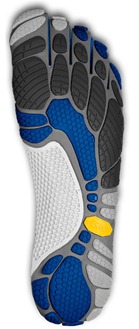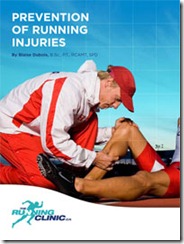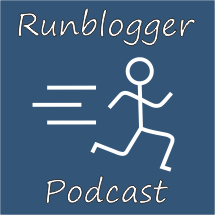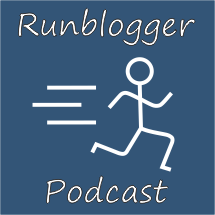 Awhile ago I read a great post by Jason Robillard on the relative merits of using the phrase “barefoot shoes” to describe minimalist footwear. Here’s how he opened it up:
Awhile ago I read a great post by Jason Robillard on the relative merits of using the phrase “barefoot shoes” to describe minimalist footwear. Here’s how he opened it up:
“I’ve been trying to fight this trend for years now, but the masses have spoken. In a battle that would rival BetaMax v. VHS, the term “barefoot shoes” has won out over “minimalist shoes.” I concede.
Yeah, I know “barefoot shoes” is an oxymoron. Yes, I know not all “barefoot shoes” give an experience that is remotely like being barefoot. Yes, I know many of my purist friends will scoff my tossing of the towel.
The only people that use the term “minimalist shoes” are my ten barefoot friends. The rest of the world calls them “barefoot shoes.”
I’ve long resisted the temptation to ever refer to a stripped-down minimalist shoe like a Vibram or a Merrell Trail Glove as a “barefoot shoe.” I’ve caved to the point of calling them barefoot-style shoes, but never straight-up barefoot (at least I hope I haven’t).
Quite frankly, I don’t even like to use the word “minimalist” to describe a specific category of footwear since there is so much variation within it. As I’ve written before, I view minimalist more as a relative term to describe shoes along a spectrum from the Brooks Beast to the bare foot (i.e., one shoe can be more or less minimal than another).
The reality is that Jason is right. The average person is far more likely to know what a “barefoot shoe” is than a “minimalist shoe.” Only serious runners and shoe geeks (and their poor spouses, children, friends, neighbors, etc.) are familiar with the minimalist terminology. Ask a random non-runner what a barefoot shoe is and the likely response will be “aren’t they those ugly things with the toes?” Ask the same person what a minimalist shoe is and you might get a blank stare.
If you don’t believe me, let me provide some evidence. I popped over to the Google Adwords Keyword tool last night for a bit of research. If you’re not familiar with the tool (and if you are a blogger, you should be!), it allows you to see how often particular term combinations are searched for via Google in a given month. Thus, it helps to determine what people call things when they are looking for information on-line. I plugged in the following three phrases: “running shoes,” “barefoot shoes,” and “minimalist shoes.” Here are the number of global monthly searches for each:
running shoes: 1,830,000
barefoot shoes: 135,000
minimalist shoes: 49,500
Barefoot shoe searches nearly triple minimalist shoe searches. What’s more, the phrase “barefoot running” beats out “minimalist running” 110,000 to 33,100.
What’s the big deal? The problem as I see it is that barefoot running and minimalist running are two truly different things. Not only is “barefoot shoe” and oxymoron, putting on a “barefoot shoe” creates an expectation that one will run as if they were barefoot. Sometimes this will be the case, but quite often it’s not, and this can create problems and increase injury risk.
For example, I was at the track last week and a guy and his wife/girlfriend showed up in his and hers Fivefingers (it was very sweet!). They had a metronome and were obviously working on “barefoot” form. However, he was heel-striking away as if he was wearing a traditional shoe. (Ironically, I was there attempting to get a high-school runner with injury problems who barely pronates when barefoot out of a pair of motion control shoes that had been “prescribed” to her by a local shoe store.) I have plenty of video of people continuing to run with a heel-striking gait in “barefoot shoes,” even on asphalt. Their form may change in other ways, but heel striking when barefoot causes a dramatic increase in the impact loading rate applied to the body, and a person heel striking in a minimally cushioned shoe like a Vibram is probably experiencing much more impact than someone in a regular running shoe – I suppose this defeats the purpose of making the switch.
I will concede that “barefoot shoes” as a category description is not going away. Although Vibram sales are declining, they will likely always fill a niche, just as other ulraminimal shoes do. But, I do think it is important to maintain a distinction: barefoot is barefoot, shoes are shoes, and the moment you put one on the other things change. Though I agree with the sentiment of Jason’s post, I just can’t bring myself to refer to a shoe as a barefoot shoe. I’ll continue to say “barefoot-style,” or perhaps “ultraminimal,” but that’s as far as I can go.
And now that I’ve addressed this most pressing of controversies, time to go for a run in my sort-of-barefoot-end-of-the-minimal-spectrum-trail-shoes :)



















I feel your pain. Besides disliking the oxymoron of “barefoot shoes”, I’ve stuck with “minimalist” because it’s a convenient catch-all that works for a wide range of shoes.
There’s a huge difference between Vibram Five Fingers and something like the Altra Lone Peak (which I use for hiking and longer trail runs), but both qualify as “minimalist” in my book. IMO the difference between the two is much smaller than the difference between the Altras and conventional hiking boots or trail running shoes.
An addendum: Another strike against ‘barefoot’ (or ‘natural’) in my mind is that both sound a bit pretentious, and might put off some folks who’d be more receptive if you used a more neutral term like ‘minimalist’ when talking with them.
i tend to use minimalist as something that’s a good shoe, but not all that great with ground feel, maybe not as flexible, more built i guess you’d say, i use “barefoot shoe” only because that’s just how i can describe it, kind of like something that you tend to forget it’s on your foot, great ground feel, almost no resistance, best shape for the foot, etc.
but i do acknowledge the oxymoron
I’ve been called all manner of condescending names when I’ve used the term “barefoot shoes” or “barefoot sandals” for Xero Shoes (formerly Invisible Shoes). I point out that, as a stickler for linguistic accuracy, it pains me to do so… but as a business person, knowing that potential customers are searching for that term, I’d be an idiot not to use it.
That never seems to placate the “purists” who’ve criticized me, even though a casual investigation reveals that I spend more time barefoot than any of those critics. Nor do the many blog posts I’ve made where I extol the virtues of being ACTUALLY barefoot. In fact, I send emails to my own customers encouraging them to take off OUR shoes, too!
That said, I’d love to have some grading system that lets the public know how much any piece of footwear lets you mimic barefoot biomechanics, gives you (or mutes) proprioceptive feedback, and in other ways lives up to the idea of “barefoot-style-movement-promoting footwear.”
FWIW, I’ve seen a pilot study that showed how unskilled barefoot runners continue to heel strike in most “barefoot” shoes, including VFFs, but don’t do so in our huaraches. I bring this up because I believe the “barefootness” of your footwear does, in fact, make a difference.
Steve,
I wouldn’t fault you at all for using the phrase since you also can bring the educational message that form matters. As a businessman, you’d be crazy to not use the phrase since you need your customers to find you. In a similar manner, for me as a blogger it’s sometimes essential to title a blog post with appropriate keywords so that it will reach a wider audience via search engines. But, once people find you, if you can bring forth a positive and educational message, no problem.
Pete
—-
Pete Larson’s Web Links:
My book: Tread Lightly – link to ow.ly
Blog: https://runblogger.com
Twitter: link to twitter.com
Facebook: link to facebook.com…
And, happily, you know I *do* emphasize form over footwear.
As far as capturing search engine traffic goes, I think our next product will be called “Justin Bieber.”
Man, I need to start Bieberblogger!
—-
Pete Larson’s Web Links:
My book: Tread Lightly – link to ow.ly
Blog: https://runblogger.com
Twitter: link to twitter.com
Facebook: link to facebook.com…
Steven have you seen this: http://www.therunningclinic.ca…
Holy smokes! My prayers have been answered!
Thanks for the pointer, Steve!
I like this one: http://www.therunningclinic.ca…
—-
Pete Larson’s Web Links:
My book: Tread Lightly – link to ow.ly
Blog: https://runblogger.com
Twitter: link to twitter.com
Facebook: link to facebook.com…
Some people also call any road race a “marathon”, even if it’s only a 5k. Or ask you if you’ve been “jogging”, as if it was the ’70s, or an abomination like the Nike Shoxs “running shoes”. I guess some terms get too ingrained in people’s mind.
I saw someone power walking in Nike Shox the other day. Had to laugh :)
—-
Pete Larson’s Web Links:
My book: Tread Lightly – link to ow.ly
Blog: https://runblogger.com
Twitter: link to twitter.com
Facebook: link to facebook.com…
I now use “pure barefoot” when I run unshod. I use “barefoot shoe” to describe a shoe made to protect the foot from the elements. And “minamilist shoe” for stripped down traditional shoes (not zero drop, cushioning that interferes with ground feel, etc)
If your feet are covered, you are wearing shoes, but what kind they are differs: Some have called my Vibrams, “Toe Shoes” and I will concede that is what they are: Shoes with noticeable toes. Around here in the 17601 zip code they still call running shoes, “running shoes” no matter how light/flat/minimal they may be. Or they may see the Vibrams and call them, “What the ____are those things???””
This reminds of that line from the sh*t barefoot runners say youtube video “The man at the store told me these are the shoes to buy if I want to run barefoot”…
Runners who wear VFF for the first time – mean they don’t have a perfect barefoot technique – are not experiencing more impact than with their usual running shoes. A study made by an independent laboratory dealing exactly with this kind of experience will be published soon.
I look forward to seeing it!
—-
Pete Larson’s Web Links:
My book: Tread Lightly – link to ow.ly
Blog: https://runblogger.com
Twitter: link to twitter.com
Facebook: link to facebook.com…
Unfortunately, that finding was not supported by the ACE fitness study that came out last year: “…those subjects who continued to utilize a rear-foot strike pattern experienced a higher rate of loading while wearing the Vibrams and running barefoot. In fact, load rates surpassed those of running with the typical running shoes, perhaps due to the lack of heel cushioning of the Vibrams or while running barefoot.”
link to acefitness.org…
—-
Pete Larson’s Web Links:
My book: Tread Lightly – link to ow.ly
Blog: https://runblogger.com
Twitter: link to twitter.com
Facebook: link to facebook.com…
I don’t know about the general public, but where I live all the runners and running shoe stores call them minimalist or minimal shoes. Vibrams may be in another category but aren’t really relevant for most runners. It’s pretty clear that the term refers to shoes designed to lessen or eliminate raised heels, cushions, arch supports and pronation control to facilitate a more natural stride.
I actually prefer the name “natural running” shoe, since minimalism is really a philosophy or movement rather than a design parameter. Yes, there’s a scale of minimalism in today’s shoes, but all of them share a characteristic of being significantly less shoe than previous year’ “traditional” training shoes.
When typing into google, Barefoot is easier to spell.
This is true
—-
Pete Larson’s Web Links:
My book: Tread Lightly – link to ow.ly
Blog: https://runblogger.com
Twitter: link to twitter.com
Facebook: link to facebook.com…